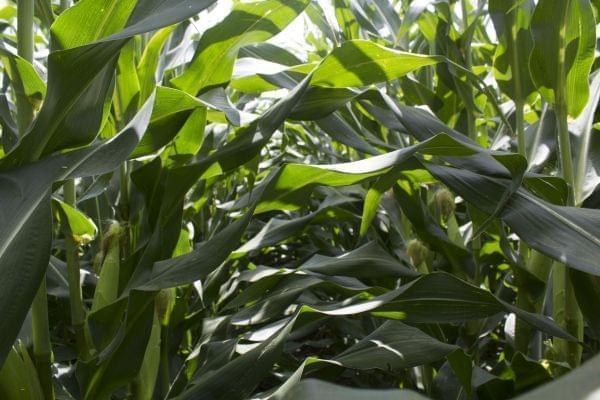Study: Intensive Agriculture Drives Midwest Climate Changes

A study tries to understand how much intensive agriculture has contributed to climate change in the Midwest. Amy Mayer/Harvest Public Media (file)
As agriculture intensified in the 20th century, summers in the Midwest became wetter and cooler. Researchers at MIT, in a study published this month, looked at whether vegetation from crop production, rather than the greenhouse gas emissions that are an established source of climate changes, could have driven these regional impacts.
“We provided very strong evidence that agricultural intensification is a stronger forcing of these observed changes than greenhouse gas emissions were,” says lead author Ross Alter, who conducted the research as a postdoctoral associate at MIT and is now a research meteorologist with the U.S. Army Corps of Engineers in New Hampshire.
“People don’t often put agricultural changes and greenhouse gas emissions in the same vein,” Alter says. “The greenhouse gas emissions are a much larger, globally, forcing.”
But for the central United States, a region defined in the research as roughly a box from the eastern Dakotas and Nebraska through Michigan and western Ohio and stretching north to mid-Minnesota and south just into Kansas and Missouri, the significantly higher number of plants on the landscape produced changes inconsistent with other parts of the world at similar northern latitudes, which don’t have the combination of temperature decreases and rainfall increases
Alter says the more crops are grown, the greater the amount of photosynthesis occurs and the more water plants use. All of that contributes to increased rainfall and humidity and cooler temperatures across the Midwest.
Iowa State University agronomist Rick Cruse, director of the Iowa Water Center, has worked on projects with climate scientists in the past, though he was not involved with the MIT study.
“This study suggests that there’s evidence that, yeah, we might ought to be considering agricultural impacts,” Cruse says, when using models to predict how the climate may continue changing. But Cruse points more specifically to irrigation, which has allowed crops like corn and soybeans to grow in arid environments where previously they couldn’t, as a target for attention.
He says to compare current and historical land use for this purpose, it’d be important to know the type and density of historical vegetation and where water is coming from to allow row crops today. It’s the movement of water on the landscape and the resulting transpiration of water from the plants that puts more moisture in the air, he says, leading to increases in rainfall and moderating the temperature.
“I don’t know that you can question bushels per acre as a means of water that’s being lost to the atmosphere,” Cruse says, “especially if you’ve had complete canopy cover in those areas in the past. It’s the expansion in areas that didn’t have water before that I think will have a bigger impact.”
The research also indicates agriculture may have masked potential increases in temperature that the greenhouse gas emissions alone might have caused.
You can watch a video about the study here.
Follow Amy on Twitter: @AgAmyinAmes
Links
- Healthcare Sign-Up Deadline; Sexual Assault In Prisons; Climate Change and Farming; Winter Pets
- Crop Insurance; Teaching Science Through Bad Examples; Faster Trains; Climate Change And Flooding
- Health Apps & Fitness Trackers; Climate Change, Politics & Religion; Video Game College Scholarships
- U of I Researcher: Proposed Agriculture Budget Cuts Would Hurt Research On Climate and Crops
- University of Illinois Expert: Trump Climate Decision Could Reduce Midwest Food Productivity

